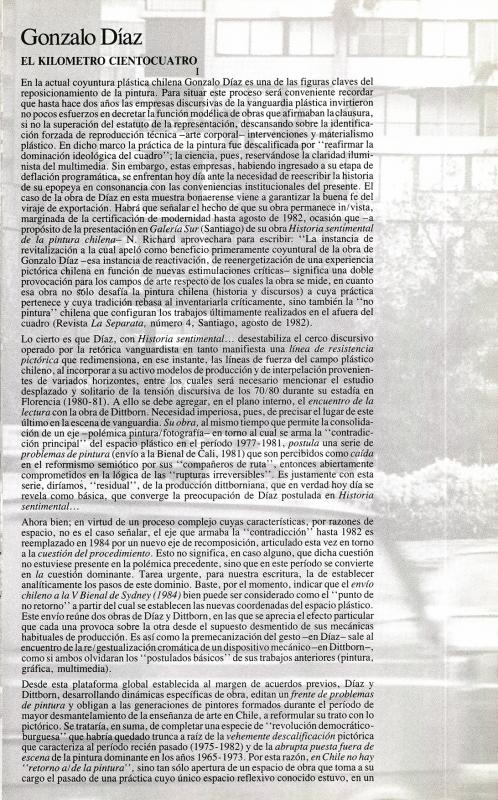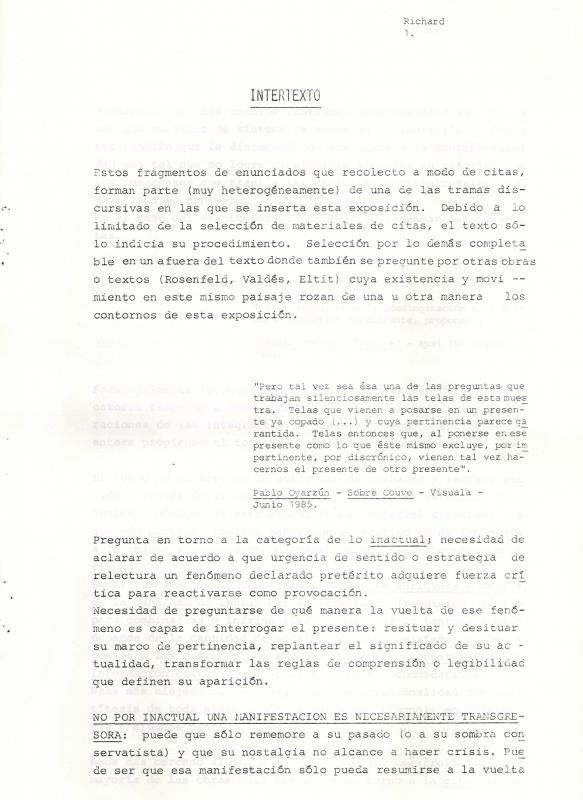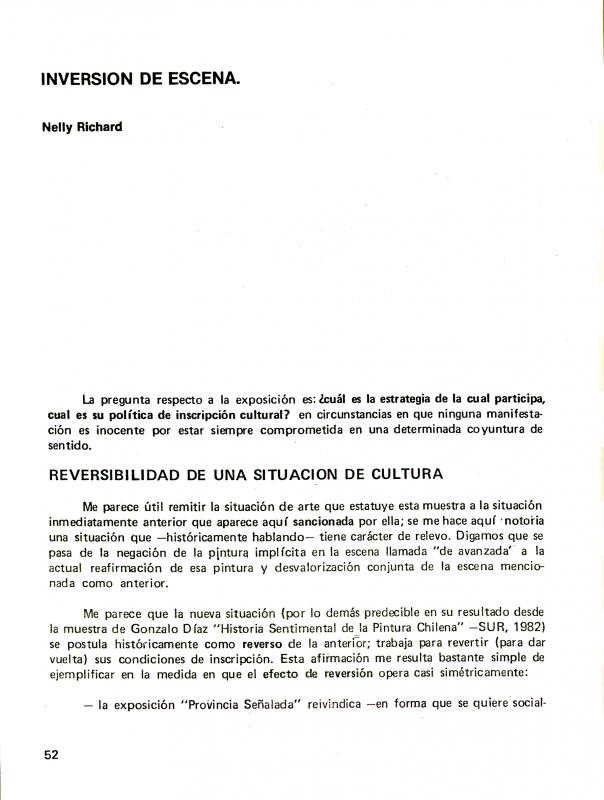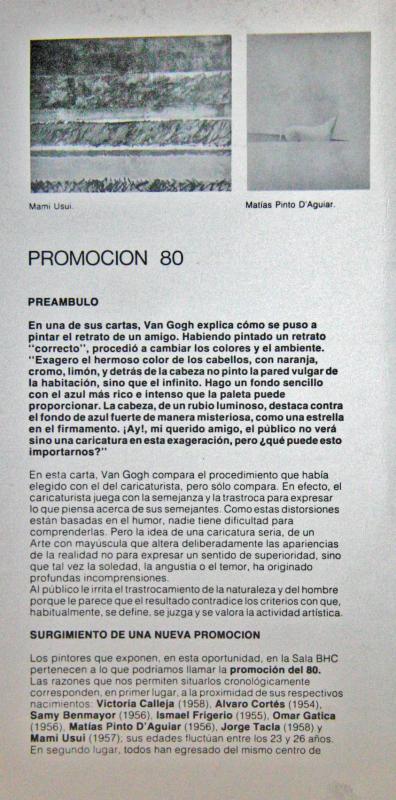Nelly Richard (b. 1948) wrote “Retroactivaciones de un proceso” [Retro-activations of a Process] for BENMAYOR/DIAZ/DITTBORN/DUCLOS/LEPPE, the exhibition at the Galería Sur (Santiago, 1983). The essay was reprinted in Cuadernos de/para el análisis 1 [Analysis Notebooks 1]. Jointly published by Richard and the art critic Justo Pastor Mellado (b. 1949), the book was divided into four sections: (I) Vanguardia e instituciones [Avant-garde and Institutions], (II) Referencialidad política en el campo de las artes visuales [Political Referentiality in the Visual Arts Field], (III) Problemática de una cultura periférica [The Problems of a Peripheral Culture], and (IV) Feminismo e identidad social [Feminism and Social Identity]. The second section, from which this essay is taken, covers what they described as “the repositioning of painting.” It describes the heated debate that consumed the art milieu at the time, pitting the return to framed paintings against the practices of the Escena de Avanzada, which had expanded boundaries by taking their art into public spaces and relying on community support. [For more information about the debate see “Gonzalo Díaz: El Kilómetro cientocuatro” (doc. no. 734722) by Justo Pastor Mellado; see also “Intertexto” (doc. no. 734686) and “Inversión de escena” (doc. no. 731376) by Nelly Richard.]
Samy Benmayor (b. 1956), who participated in this exhibition, was one of the Promoción 80, the generation that took its name from the title of the exhibition of young painters presented at the Museo de Arte Contemporáneo (MAC) in Santiago that same year (1980). This group was determined to reposition painting in an environment where conceptualism was highly prized. [For more information on this matter, see “Promoción 80” (doc. no. 740347) by Milan Ivelic.] Arturo Duclos (b. 1959) also showed his work at the exhibition at the Galería Sur, as did the following artists involved in the Escena de Avanzada: Gonzalo Díaz (b. 1947), Eugenio Dittborn (b. 1943), and Carlos Leppe (1952–2015). The artists themselves therefore questioned Richard’s views on this kind of production with works that did not dovetail with her idea of “advanced.” She acknowledged the situation and continued the debate with texts that were included in exhibitions and reflected the mood of the time.




